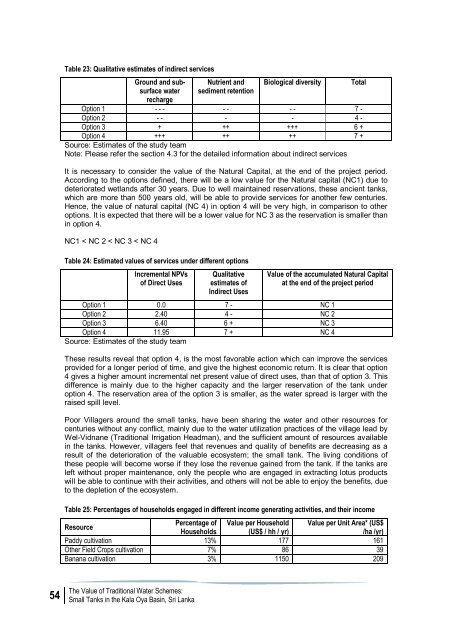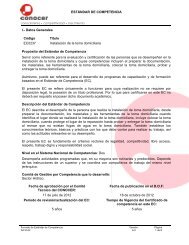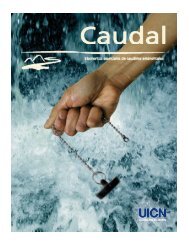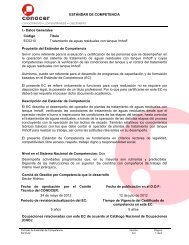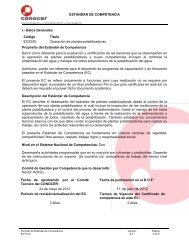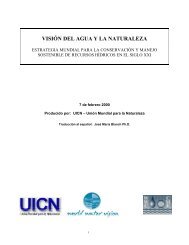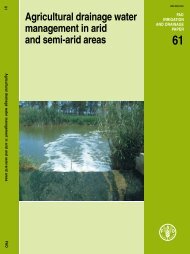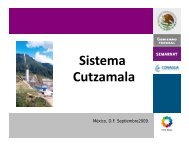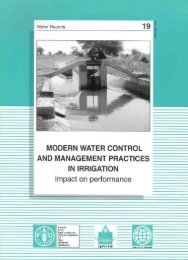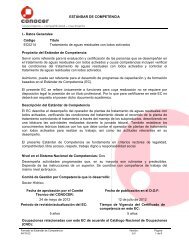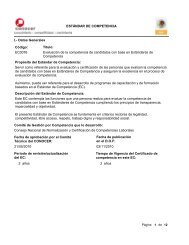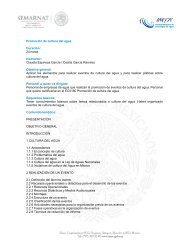Document - IUCN
Document - IUCN
Document - IUCN
You also want an ePaper? Increase the reach of your titles
YUMPU automatically turns print PDFs into web optimized ePapers that Google loves.
Table 23: Qualitative estimates of indirect servicesGround and subsurfacewaterrechargeNutrient andsediment retentionBiological diversityOption 1 - - - - - - - 7 -Option 2 - - - - 4 -Option 3 + ++ +++ 6 +Option 4 +++ ++ ++ 7 +Source: Estimates of the study teamNote: Please refer the section 4.3 for the detailed information about indirect servicesIt is necessary to consider the value of the Natural Capital, at the end of the project period.According to the options defined, there will be a low value for the Natural capital (NC1) due todeteriorated wetlands after 30 years. Due to well maintained reservations, these ancient tanks,which are more than 500 years old, will be able to provide services for another few centuries.Hence, the value of natural capital (NC 4) in option 4 will be very high, in comparison to otheroptions. It is expected that there will be a lower value for NC 3 as the reservation is smaller thanin option 4.NC1 < NC 2 < NC 3 < NC 4Table 24: Estimated values of services under different optionsIncremental NPVsof Direct UsesQualitativeestimates ofIndirect UsesTotalValue of the accumulated Natural Capitalat the end of the project periodOption 1 0.0 7 - NC 1Option 2 2.40 4 - NC 2Option 3 6.40 6 + NC 3Option 4 11.95 7 + NC 4Source: Estimates of the study teamThese results reveal that option 4, is the most favorable action which can improve the servicesprovided for a longer period of time, and give the highest economic return. It is clear that option4 gives a higher amount incremental net present value of direct uses, than that of option 3. Thisdifference is mainly due to the higher capacity and the larger reservation of the tank underoption 4. The reservation area of the option 3 is smaller, as the water spread is larger with theraised spill level.Poor Villagers around the small tanks, have been sharing the water and other resources forcenturies without any conflict, mainly due to the water utilization practices of the village lead byWel-Vidnane (Traditional Irrigation Headman), and the sufficient amount of resources availablein the tanks. However, villagers feel that revenues and quality of benefits are decreasing as aresult of the deterioration of the valuable ecosystem; the small tank. The living conditions ofthese people will become worse if they lose the revenue gained from the tank. If the tanks areleft without proper maintenance, only the people who are engaged in extracting lotus productswill be able to continue with their activities, and others will not be able to enjoy the benefits, dueto the depletion of the ecosystem.Table 25: Percentages of households engaged in different income generating activities, and their incomeResourcePercentage of Value per Household Value per Unit Area* (US$Households(US$ / hh / yr)/ha /yr)Paddy cultivation 13% 177 161Other Field Crops cultivation 7% 86 39Banana cultivation 3% 1150 20954The Value of Traditional Water Schemes:Small Tanks in the Kala Oya Basin, Sri Lanka


